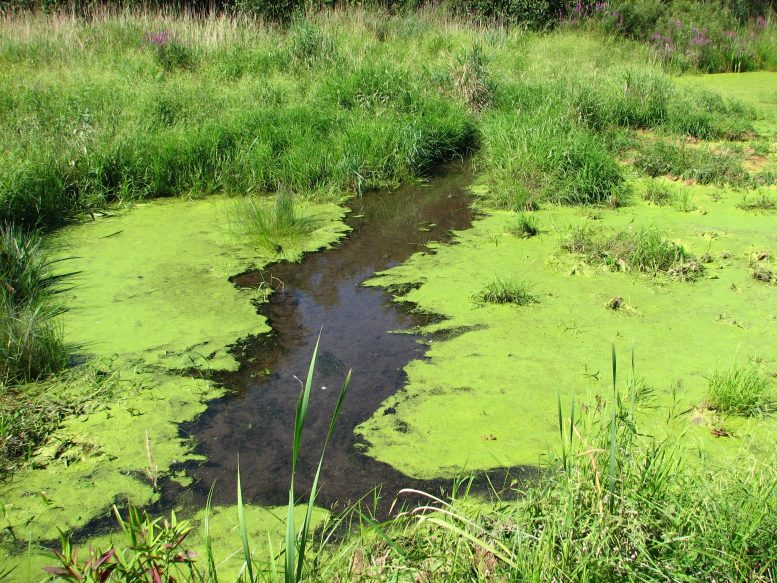
In a newly published study, UC Davis scientists detail how they engineered cyanobacteria to grow chemical precursors for fuels and plastics, taking a step forward in establishing independence from fossil reserves.
Chemists at the University of California, Davis, have engineered blue-green algae to grow chemical precursors for fuels and plastics — the first step in replacing fossil fuels as raw materials for the chemical industry.
“Most chemical feedstocks come from petroleum and natural gas, and we need other sources,” said Shota Atsumi, assistant professor of chemistry at UC Davis and lead author of the study published in the Proceedings of the National Academy of Sciences.
The U.S. Department of Energy has set a goal of obtaining a quarter of industrial chemicals from biological processes by 2025.
Biological reactions are good at forming carbon-carbon bonds, using carbon dioxide as a raw material for reactions powered by sunlight. It’s called photosynthesis, and cyanobacteria, also known as “blue-green algae,” have been doing it for more than 3 billion years.
Using cyanobacteria to grow chemicals has other advantages: They do not compete with food needs, like corn’s role in the creation of ethanol.
The challenge is to get the cyanobacteria to make significant amounts of chemicals that can be readily converted to chemical feedstocks. With support from Japanese chemical manufacturer Asahi Kasei Corp., Atsumi’s lab at UC Davis has been working on introducing new chemical pathways into the cyanobacteria.
The researchers identified enzymes from online databases that carried out the reactions they were looking for, and then introduced the DNA for these enzymes into the cells. Working a step at a time, they built up a three-step pathway that allows the cyanobacteria to convert carbon dioxide into 2,3 butanediol, a chemical that can be used to make paint, solvents, plastics and fuels.
Because enzymes may work differently in different organisms, it is nearly impossible to predict how well the pathway will work before testing it in an experiment, Atsumi said.
After three weeks growth, the cyanobacteria yielded 2.4 grams of 2,3 butanediol per liter of growth medium — the highest productivity yet achieved for chemicals grown by cyanobacteria and with potential for commercial development, Atsumi said.
Atsumi hopes to tune the system to increase productivity further and experiment with other products, while corporate partners explore scaling up the technology.
Reference: “Cyanobacterial conversion of carbon dioxide to 2,3-butanediol” by John W. K. Oliver, Iara M. P. Machado, Hisanari Yoneda and Shota Atsumi, 7 January 2013, Proceedings of the National Academy of Sciences.
DOI: 10.1073/pnas.1213024110
Co-authors of the paper are graduate student John Oliver, postdoctoral researcher Iara Machado and Hisanari Yoneda, a visiting researcher from Asahi Kasei Corp.